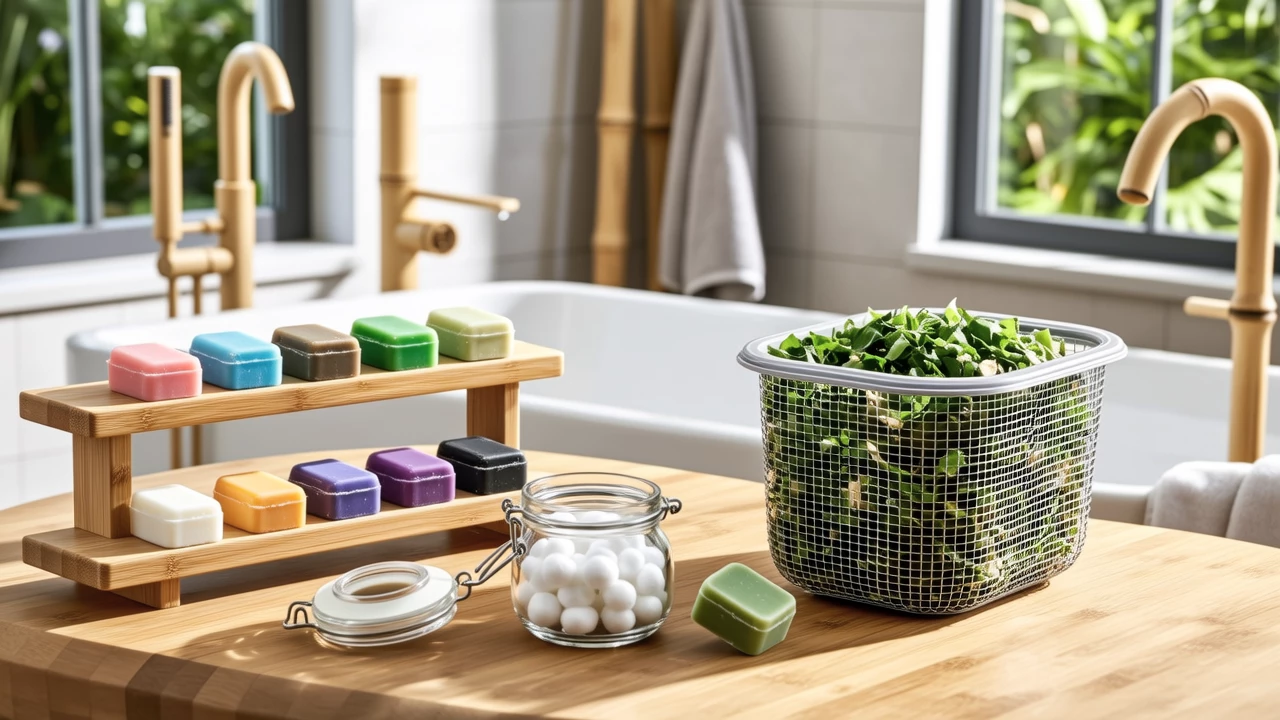The beauty industry is undergoing a transformative shift as we approach 2025, blending sustainability with high-end glamour in ways never seen before. Consumers are increasingly demanding products that not only enhance their appearance but also align with their values of environmental responsibility. This trend, dubbed “Eco Meets Glam,” is set to redefine beauty standards by prioritizing eco-friendly practices without compromising on luxury or effectiveness. From packaging innovations to ingredient sourcing, the future of beauty is green, chic, and conscious.
One of the most prominent trends is the rise of sustainable packaging. Brands are moving away from single-use plastics and embracing materials that are biodegradable, refillable, or made from recycled sources. For instance, many companies are introducing compact cases that can be reused indefinitely, reducing waste significantly. This shift is not just about functionality; it’s about aesthetics too, with designs that are sleek, modern, and Instagram-worthy. Consumers can expect to see more bamboo, glass, and even mushroom-based packaging that decomposes naturally. Additionally, the use of AI in packaging design is helping create personalized, waste-minimizing solutions that cater to individual preferences while cutting down on environmental impact.
Additionally, the use of AI in packaging design is helping create personalized, waste-minimizing solutions that cater to individual preferences while cutting down on environmental impact.
Another key aspect is the focus on natural and organic ingredients. In 2025, beauty products will heavily feature plant-based, vegan, and cruelty-free formulations that are gentle on the skin and the planet. This trend is driven by a growing awareness of the harmful effects of synthetic chemicals and a desire for transparency in labeling. Brands are sourcing ingredients from sustainable farms and using biotechnology to create potent, natural alternatives to traditional compounds. For example, algae-based serums and flower-extract foundations are becoming mainstream, offering benefits like hydration and anti-aging without the ecological footprint. Here are some popular ingredient trends to watch out for:
- Hemp and CBD-infused products for calming and rejuvenating effects
- Upcycled ingredients from food waste, such as coffee grounds or fruit peels, repurposed into scrubs and masks
- Biotech-engineered enzymes that mimic natural processes for enhanced efficacy
- Locally sourced botanicals to reduce carbon emissions from transportation
The zero-waste beauty movement is also gaining momentum, encouraging consumers to adopt habits that minimize environmental impact. This includes everything from waterless products to DIY beauty kits that allow users to create their own formulations at home. Brands are innovating with solid formats for shampoos, conditioners, and even foundations, eliminating the need for liquid containers and reducing plastic waste. Moreover, the concept of “beauty circularity” is emerging, where products are designed to be returned, refilled, or composted, creating a closed-loop system. Consumers are increasingly drawn to brands that offer take-back programs or use minimal packaging, as this aligns with a broader lifestyle shift towards sustainability.
Consumers are increasingly drawn to brands that offer take-back programs or use minimal packaging, as this aligns with a broader lifestyle shift towards sustainability.
Technology is playing a crucial role in merging eco-consciousness with glamour. Advances in AI and machine learning are enabling personalized beauty recommendations that reduce overconsumption by suggesting products tailored to individual needs. Virtual try-on tools allow users to test makeup without physical samples, cutting down on waste. Additionally, 3D printing is being used to create custom skincare devices and makeup applicators from biodegradable materials. These innovations not only enhance the user experience but also promote a more sustainable approach to beauty consumption. For instance, smart mirrors that analyze skin health can recommend eco-friendly products based on real-time data, ensuring that purchases are intentional and effective.
Consumer behavior is evolving to prioritize ethics and sustainability. People are more informed than ever, thanks to social media and digital platforms that highlight the environmental impact of beauty products. This has led to a demand for greater transparency, with brands sharing detailed information about their supply chains, carbon footprints, and labor practices. As a result, certifications like B Corp and Leaping Bunny are becoming standard markers of trust. In 2025, we can expect to see more collaborations between beauty brands and environmental organizations, as well as influencer-led campaigns that promote green beauty habits. Here are some ways consumers are engaging with this trend:
- Participating in subscription services for refillable products to reduce waste
- Choosing multi-use products that serve multiple purposes, like a lipstick that doubles as a blush
- Supporting indie brands that focus on local, sustainable production
- Educating themselves through apps that scan product ingredients for eco-friendliness
Looking ahead, the fusion of eco and glam in beauty is not just a passing trend but a fundamental shift towards a more responsible industry. By 2025, we anticipate even more innovative solutions, such as carbon-neutral manufacturing processes and beauty products that actively contribute to environmental causes. For example, some brands are pledging to plant a tree for every product sold, creating a positive feedback loop. The overall message is clear: beauty can be both luxurious and kind to the planet, and consumers are eager to embrace this balance.![A diverse group of people enjoying a green beauty workshop in a modern